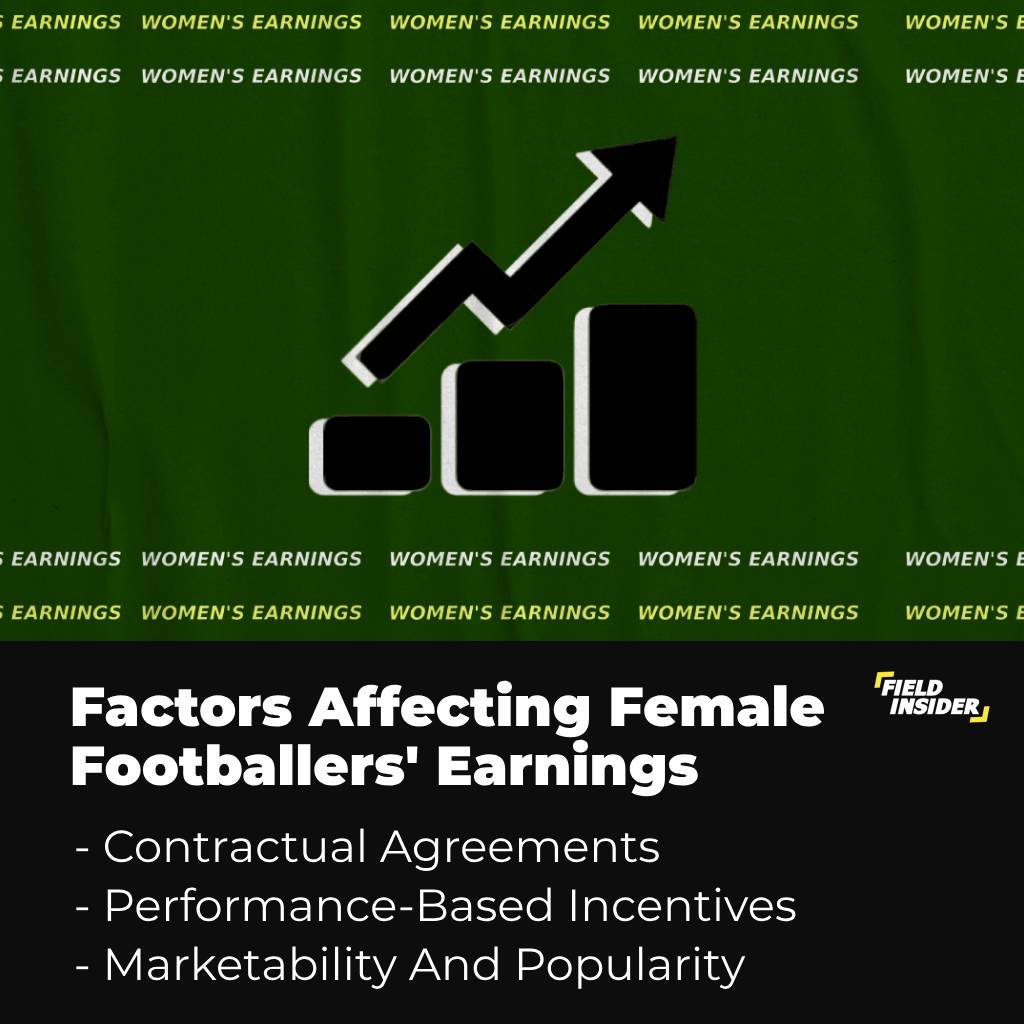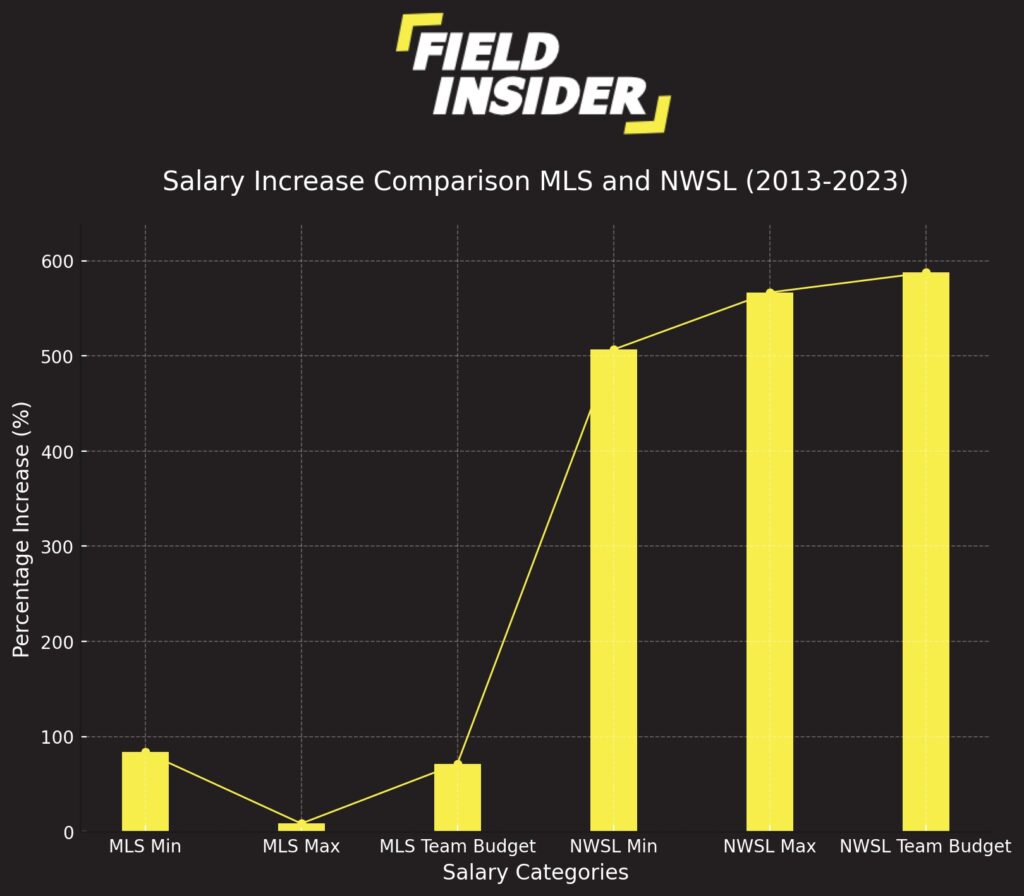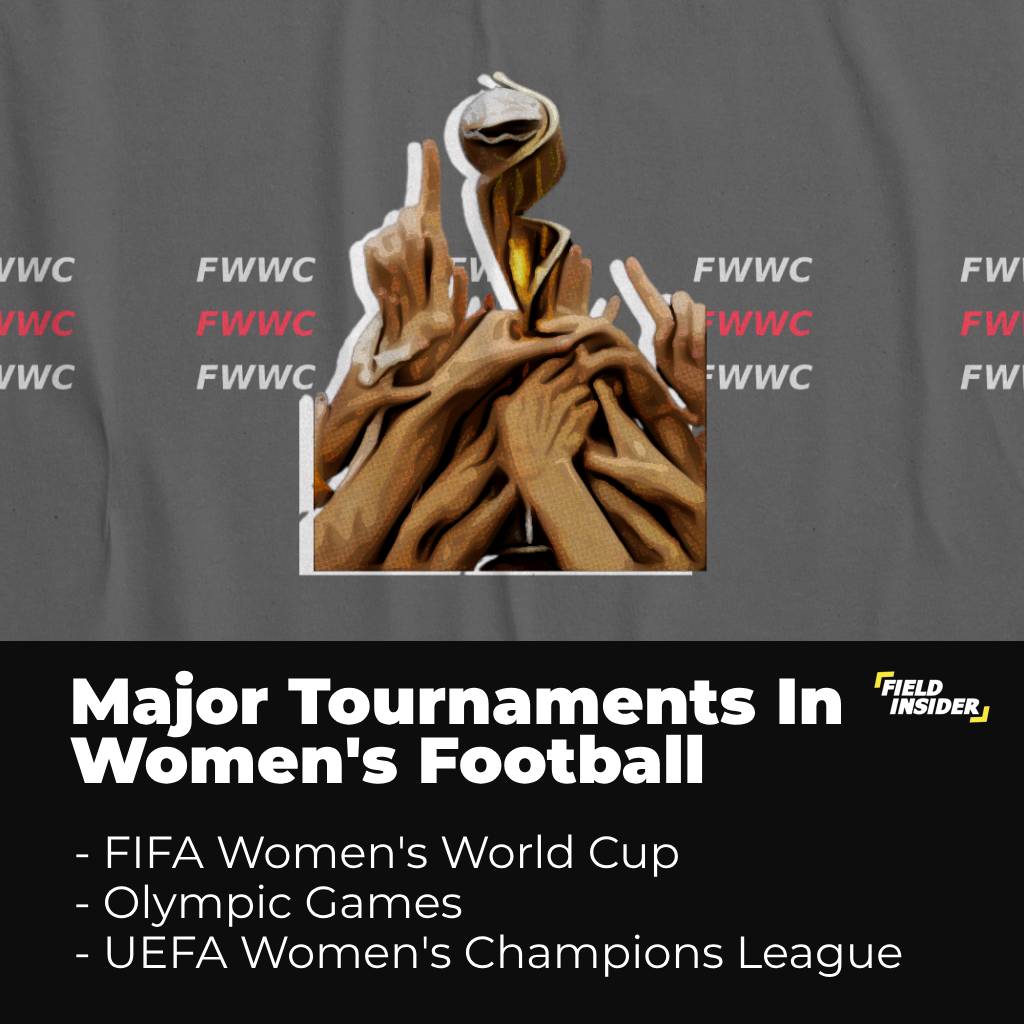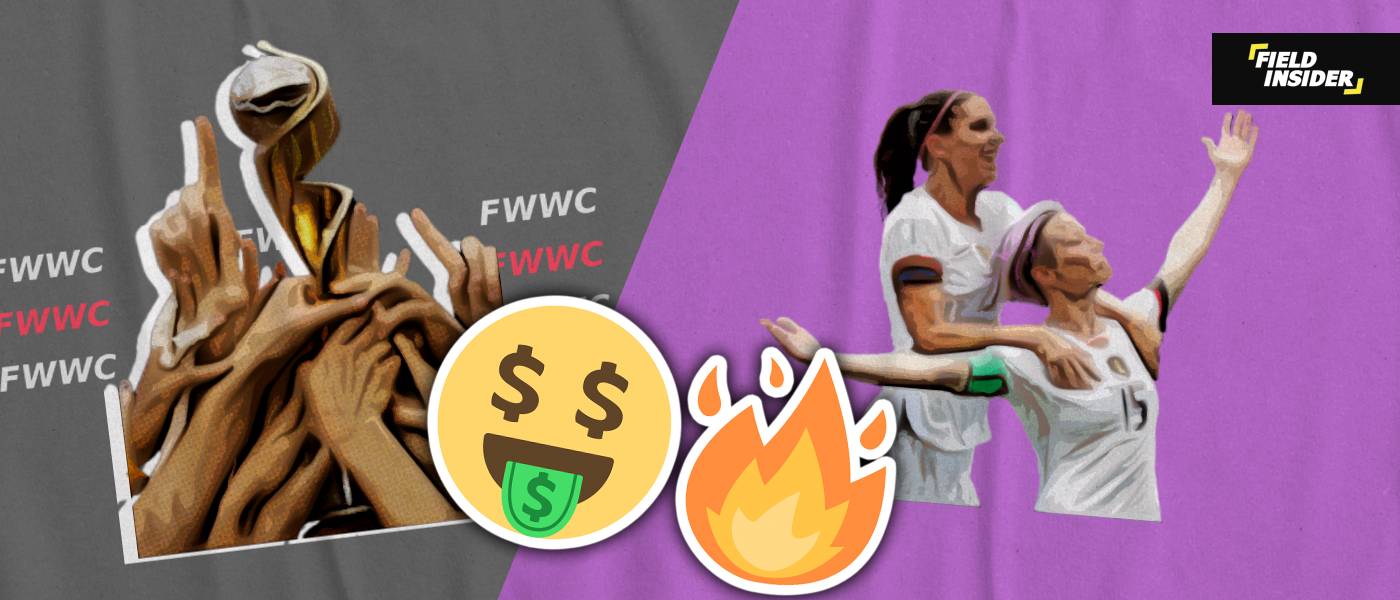How Much Do Female Footballers Earn? A Close Analysis
Female footballers often earn lower pay than males, despite playing the same game. Some attribute this to gender inequality.
Critics might claim that the higher skill level or popularity of men’s football justifies the wage difference, with the larger audience for men’s games typically cited as a reason for this disparity.
However, a closer examination suggests otherwise. Exploring what female footballers earn goes beyond mere curiosity; it’s about acknowledging their worth, their contributions, and the strides toward equal treatment in sports.
KEY TAKEAWAYS
| Topic | Key Points to Remember |
|---|---|
| Historical Earnings | Women’s football has evolved, but disparities remain. |
| Factors Influencing Earnings | Contracts, performance, marketability, and gender gap. |
| Top Earners & Case Studies | Profiles of top female athletes and those breaking barriers. |
| Major Tournaments’ Impact | Tournaments boost income through prizes and visibility. |
| Strategies to Increase Earnings | Advocacy, visibility, and digital presence are key. |
| Recent Developments in Earnings | Positive shifts in investments and policies are emerging. |
| Our Role | Informing and supporting the growth of the sport. |
HISTORICAL PERSPECTIVE
Evolution of women’s football
Women’s football has its roots in the late 19th century but faced many social and institutional hindrances. It wasn’t until the late 20th century that the sport began to see formal recognition and investment.
The evolution from then to now—a time when women’s football attracts global audiences—is nothing short of remarkable.
Disparities in earnings compared to male counterparts
The pay gap has been a glaring issue. Historically, women’s football has been undervalued, resulting in lower wages, fewer sponsorships, and less media attention compared to men’s football.
However, the narrative is gradually changing as the fight for equal pay gains momentum.
Factors Affecting How Much Female Footballers Earn
Contractual agreements
Club contracts
The foundation of a footballer’s income, club contracts vary based on the league’s commercial success and the club’s financial power.
For instance, playing in the UEFA Women’s Champions League could lead to more lucrative contracts due to the tournament’s prestige.
Endorsements and sponsorships
Players with high marketability, such as those contending for the Golden Boot, can secure significant deals that often outstrip their club salaries.

Performance-based incentives
Scoring goals, winning matches, and clinching titles can earn players bonuses. These incentives encourage peak performance and offer a path to higher earnings.
Marketability and popularity
A player’s public appeal can translate into commercial success. Engaging with fans through social media and having a relatable image can substantially increase a player’s earning potential.
The difference between male and female footballer’s viewership is significant. In terms of club football as WSL matches average 57,000 viewers, which is 937,000 fewer than Premier League matches, and are transmitted on the same channel.
The Premier League is broadcast in 156 countries worldwide, reaching a potential TV audience of 4.2 billion people, which is simply incomparable to the current viewing demand for women’s football.
Gender pay gap in Soccer: The Progress In USA
Over the past decade, the landscape of soccer salaries in the United States has evolved significantly, with both Major League Soccer (MLS) and the National Women’s Soccer League (NWSL) experiencing substantial growth in their financial remuneration for players.
In the MLS, the minimum player salary jumped by 83.75%, from $46,500 to $85,444, while the upper echelon of salaries saw a more modest rise of 8.54%, climbing from $600,000 to $651,250.

The overall team salary budget also saw a significant boost, with an increase of 71.36%, reflecting a new range from $4,900,000 to $5,210,000 — a notable leap from the previous $2,950,000 cap.
Parallel to the MLS, the NWSL made even more dramatic strides in its salary structures. The league’s minimum salary skyrocketed by an impressive 506.67%, up from $6,000 to $36,400, while the maximum salary bounded upward by 566.67%, from $30,000 to $200,000.
This rapid increase reflects an overarching expansion of the team salary budget, which ballooned by 587.5% from $200,000 to $1,375,000.
Despite these gains, the disparity between men’s and women’s soccer salaries remains pronounced, although the gap has been slowly closing, with a 30% reduction in the league difference in salary budget since 2020.
The NWSL’s continued efforts to offer more competitive compensation signal a positive trajectory towards narrowing the gender pay gap in professional soccer.
| Salary Category | MLS (2023) | NWSL (2023) |
| Minimum Salary | $85,444 | $36,400 |
| Maximum Salary | $651,250 | $200,000 |
| Team Salary Budgect/Cap | $5,210,000 | $1,375,000 |
How much less do Female Footballers Earn?
A salary survey was conducted by Sporting Intelligence in 2017 indicated that the average basic annual first-team salary in the Premier League was 9,868% higher, according to a study that looked only at footballers’ basic wages (excluding sponsorships and international team funds).
Then there’s the Women’s Super League, England’s top-flight women’s league. Lionel Messi earned a total of €130,000,000 in 2018. Ada Hegerberg, the female Ballon d’Or winner that year, received only €400,000.
Who are the highest-paid female footballers in 2023?
Although the earnings of female football players generally lag behind those of male players, a number of female athletes have still managed to amass considerable wealth.

Football organizations worldwide, led by FIFA as the premier authority for the sport, have begun to emphasize the importance of equal pay for men and women in football. Recent trends in club salaries also reflect this push towards financial equity.
Bearing the above in mind, let’s look at the top-earning female football players of 2023, ranked by their annual gross income.
| Player | Gross Annual Earnings (USD millions) |
|---|---|
| Alex Morgan | 7.1 |
| Megan Rapinoe | 7.0 |
| Alexia Putellas | 4.0 |
| Trinity Rodman | 2.3 |
| Crystal Dunn | 2.0 |
| Julie Ertz | 2.0 |
| Sophia Smith | 2.0 |
| Lindsey Horan | 1.5 |
| Rose Lavelle | 1.4 |
| Sofia Huerta | 1.3 |
Analyzing the Impact of Major Tournaments
Major tournaments like the FIFA Women’s World Cup and UEFA Women’s Champions League are not just about competition but also significant financial opportunities for female footballers.
These events can propel players to fame, increasing their market value and earning potential through prize money, endorsements, and club contracts.
FIFA Women’s World Cup
A standout performance can lead to attractive sponsorship deals, far surpassing the tournament’s prize money. The global exposure players receive is invaluable for personal brand building.
OLYMPIC GAMES
While direct earnings from the Olympics may be less, the prestige of an Olympic medal can attract top-tier sponsors and elevate a player’s marketability.
UEFA Women’s Champions League
Success in Europe’s top club competition often results in better contracts and bonuses. It’s a showcase for talent, leading to higher salaries and transfers to bigger clubs.

Comparing Tournament Earnings to Regular Income
Tournament winnings can exceed a player’s annual club salary, with the potential for bonuses and increased pay post-tournament success.
OVERALL IMPACT
Major tournaments boost not just individual players’ earnings but also the commercial interest in women’s football, leading to a broader financial uplift for the sport.
In essence, these tournaments offer a transformative potential for the players’ financial gain and the sport’s growth, making each match an opportunity to shape their careers and the future of women’s football.
Strategies to Increase Earnings
In women’s football, increasing earnings goes beyond advocating for equal pay; it’s about embracing and executing strategic methods that amplify a player’s earning capacity. Here are some of the key strategies:
Advocacy for equal pay
Players and associations must continue to push for pay parity. High-profile cases, like the U.S. women’s national team’s lawsuit for equal pay, not only highlights the issue but can also lead to institutional changes.
Public support for these movements can create pressure that results in more equitable pay structures.
Branding and marketing
Female footballers can work on crafting a unique personal brand that resonates with fans and sponsors. This includes:
- Identifying a Niche: Players should find unique angles or stories that set them apart, such as their journey, playing style, or off-field interests, and promote these aspects to differentiate themselves in the market.
- Consistent Brand Messaging: Establishing a consistent image and message across all platforms ensures that fans and sponsors receive a coherent brand experience, which can lead to more lucrative endorsement deals.
- Partnerships with Brands: Aligning with brands that share similar values or target demographics can enhance a player’s visibility and attractiveness to other potential sponsors.
Digital presence and engagement
A strong online presence can significantly impact a player’s marketability.
- Social Media Platforms: Players can use social media to engage with fans, share behind-the-scenes content, and build a loyal following, which in turn makes them more attractive to sponsors.
- Content Creation: Developing original content such as blogs, vlogs, or podcasts allows players to connect with audiences on a deeper level, providing more avenues for monetization.
- Interactive Experiences: Hosting webinars, online clinics, or Q&A sessions can help players establish their expertise and attract attention from both fans and brands interested in the sport.
By combining equal pay advocacy with strong personal branding and an active digital presence, female footballers can unlock new earning potentials and set a precedent for the commercial viability of the sport.
These strategies can help transform their success on the pitch into sustainable financial rewards.
Recent Developments
There have been encouraging shifts in the landscape of women’s football earnings. New investments and changes in policies are opening up more opportunities for female athletes.
Surge in Commercial Investments
The landscape of women’s football has experienced a remarkable shift with a surge in commercial investments. This influx is not just from traditional sports-centric companies but also from a diverse array of businesses seeking to associate with the values and demographics represented by female athletes.
Major brands are now looking for sponsorship and partnership opportunities, seeing the value in promoting gender equality and supporting women’s sports, in turn, increasing what female footballers earn.
According to research conducted by Nielsen, just 3% of print and 4% of online coverage goes to women’s only sport and less than 20% of all TV sport covers women only or mixed sport.
So that’s the bad news. But, there is hope yet. Between 2013 and 2017, the number of women’s sports sponsorship deals increased by 47%. Brands such as SSE, Visa, and O2 have all paved the way for women’s sports sponsorships.

Media Rights and Coverage Expansion
Alongside commercial investments, there has been a significant expansion in media rights and coverage for women’s football. Broadcasters are acquiring rights to show more games than ever before, both on traditional television and streaming platforms.
This exposure is crucial, as it not only generates additional revenue through advertising and subscription models but also elevates the profile of the players and the sport itself.
The enhanced visibility allows for greater storytelling, showcasing the talents and narratives of female footballers, which in turn attracts more fans and inspires the next generation of players.
The ripple effect of this increased coverage is profound, leading to greater public interest, higher attendance at matches, and more opportunities for women within the sport.
Conclusion
Female footballers’ salaries are not just figures; they signify progress toward gender parity in sports. These numbers depicting what female footballers earn highlight the ongoing battle for equal pay.
The conversation about gender equality may be long overdue, but it’s vital nonetheless. The growing competitiveness and popularity of women’s football mark a significant shift in the sport’s dynamics.
A testament to this shift was the impressive turnout at Camp Nou, where Barcelona Femeni attracted close to 100,000 spectators for a 2022 UWCL match—a stark contrast to the minimal attention women’s sports once received.








